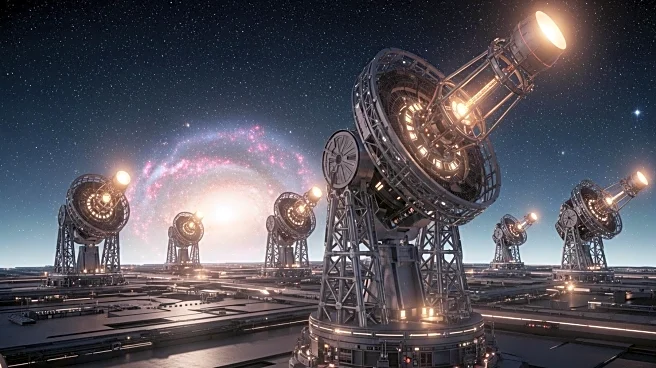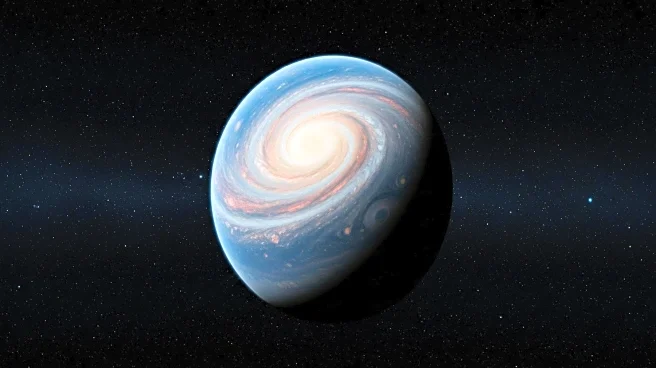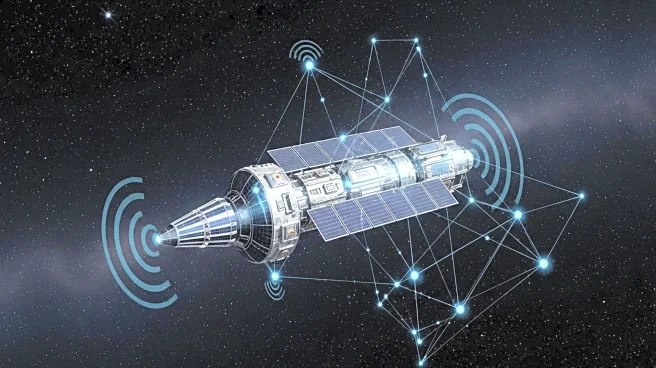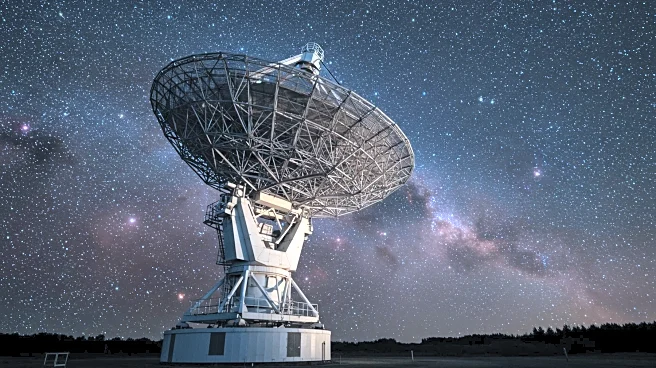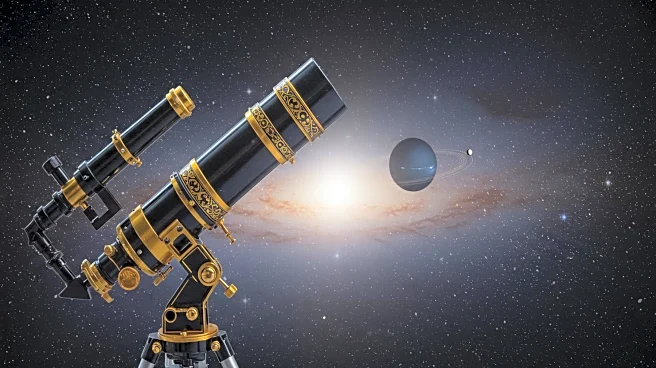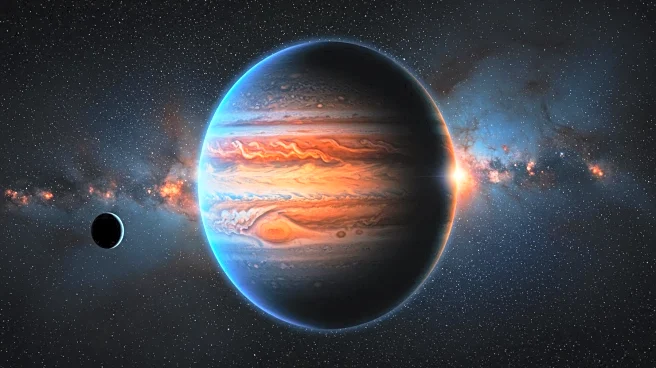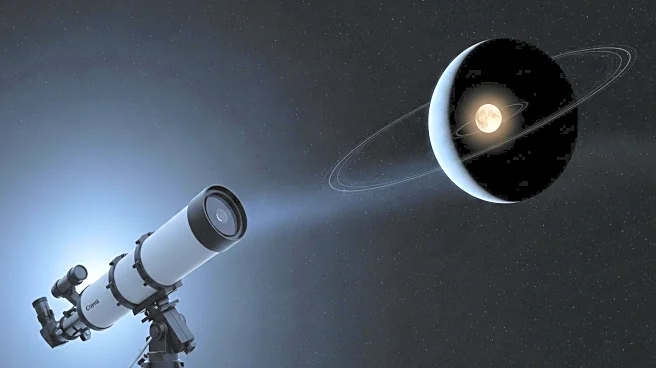What's Happening?
Scientists have developed a new model to better understand 'steam worlds,' which are exoplanets smaller than Neptune but larger than Earth, with atmospheres filled with water vapor. These planets are too hot for liquid water on their surfaces, making them unlikely to harbor life. However, modeling them precisely can aid in understanding ocean planets and directing the search for life beyond the solar system. The James Webb Space Telescope has confirmed the presence of steam in the atmospheres of several sub-Neptune planets, highlighting the need for models that connect their atmospheres to their interiors.
Why It's Important?
Steam worlds represent a significant area of study in the search for extraterrestrial life. By understanding these planets' compositions and origins, scientists can refine their focus on less common exoplanets that may be habitable. The development of accurate models for steam worlds can provide insights into the conditions necessary for life and the potential for new niches in the galaxy. This research also contributes to the broader understanding of planetary formation and evolution.
What's Next?
The launch of the European Space Agency's PLATO telescope in 2026 will test the accuracy of current models and refine them further. PLATO aims to find Earth-size planets in habitable zones, providing observational data to validate steam world models. Continued research will focus on understanding the exotic states of water in steam worlds and their implications for life.
